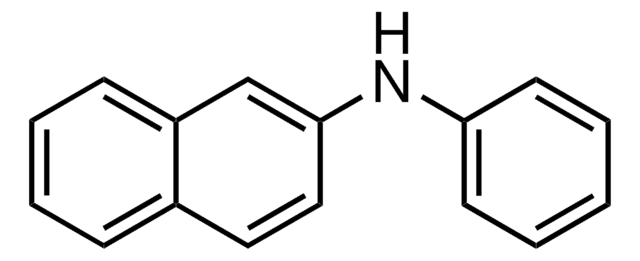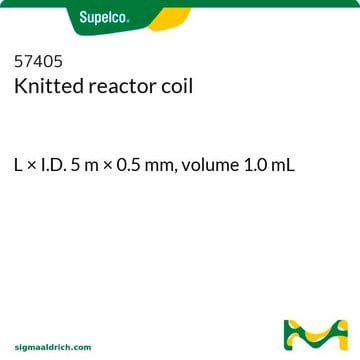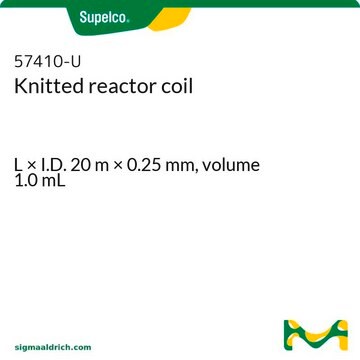Kluczowe dokumenty
104043
N-Phenyl-1-naphthylamine
reagent grade, 98%
Synonim(y):
1-(N-phenylamino)naphthalene, N-(1-Naphthyl)aniline, NPN
Wybierz wielkość
716,00 zł
Wybierz wielkość
About This Item
716,00 zł
Polecane produkty
klasa czystości
reagent grade
Poziom jakości
Próba
98%
Formularz
solid
bp
226 °C/15 mmHg (lit.)
mp
60-62 °C (lit.)
λmaks.
252 nm
ciąg SMILES
N(c1ccccc1)c2cccc3ccccc23
InChI
1S/C16H13N/c1-2-9-14(10-3-1)17-16-12-6-8-13-7-4-5-11-15(13)16/h1-12,17H
Klucz InChI
XQVWYOYUZDUNRW-UHFFFAOYSA-N
Szukasz podobnych produktów? Odwiedź Przewodnik dotyczący porównywania produktów
Zastosowanie
Działania biochem./fizjol.
Hasło ostrzegawcze
Warning
Zwroty wskazujące rodzaj zagrożenia
Zwroty wskazujące środki ostrożności
Klasyfikacja zagrożeń
Acute Tox. 4 Oral - Aquatic Acute 1 - Aquatic Chronic 1 - Skin Sens. 1B - STOT RE 2
Organy docelowe
Blood
Kod klasy składowania
11 - Combustible Solids
Klasa zagrożenia wodnego (WGK)
WGK 2
Środki ochrony indywidualnej
dust mask type N95 (US), Eyeshields, Gloves
Wybierz jedną z najnowszych wersji:
Certyfikaty analizy (CoA)
Nie widzisz odpowiedniej wersji?
Jeśli potrzebujesz konkretnej wersji, możesz wyszukać konkretny certyfikat według numeru partii lub serii.
Masz już ten produkt?
Dokumenty związane z niedawno zakupionymi produktami zostały zamieszczone w Bibliotece dokumentów.
Klienci oglądali również te produkty
Active Filters
Nasz zespół naukowców ma doświadczenie we wszystkich obszarach badań, w tym w naukach przyrodniczych, materiałoznawstwie, syntezie chemicznej, chromatografii, analityce i wielu innych dziedzinach.
Skontaktuj się z zespołem ds. pomocy technicznej













